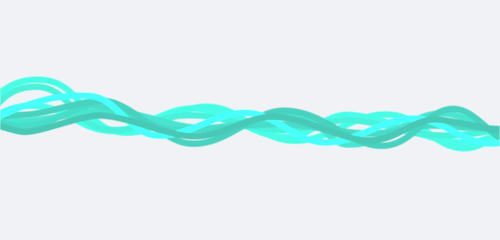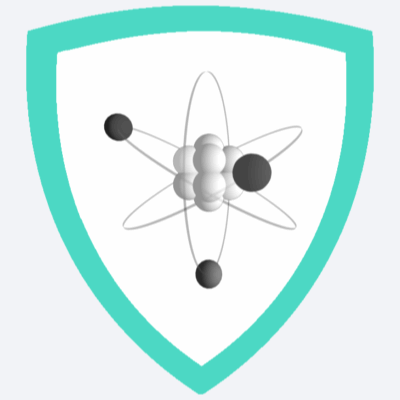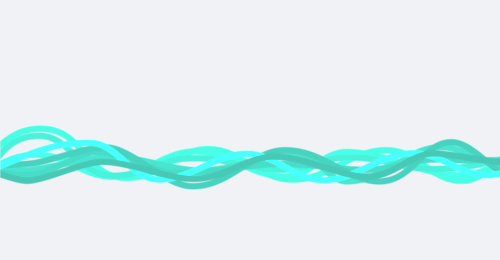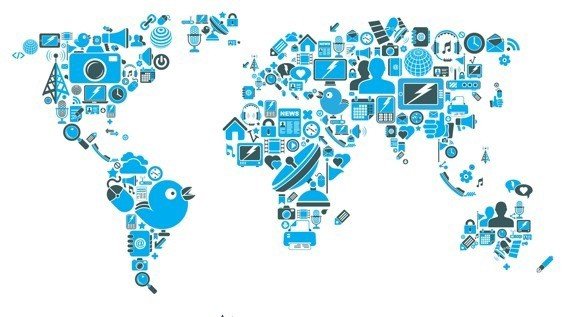IOTA Economy of Internet-of-Things

IOTA
Economy of Internet-of-Things
In a nutshell IOTA is designed to be the backbone of the Internet-of-Things economy. It is an open-source, decentralized cryptocurrency that is meticulously engineered specifically for real-time micro-transactions in an environment that requires scalable flexibility and lightweight hardware. It will solve infrastructural problems for IoT and enable the ‘sharing economy’ of distributed technological resources.The core innovation of IOTA is the Tangle

Pretty Tangle illustration
The Tangle retain the blockchain features of the distributed ledger and secure transactions, but drops the blocks. Instead it takes the form of a Directed Acyclic Graph.

Raw Tangle illustration
Economy of Internet-of-Things
Internet-of-Things (IoT) is a lot more than a buzzword, it’s an inevitable paradigm shift that we are all at the cusp of. It marks the dawn of an age of unprecedented automation, distribution, efficacy and growth. While the term ‘IoT’ conjure up fantastical imagery resembling SCI-FI-esque promises, it is in reality just an inevitable and natural evolutionary step in the ceaseless chain of technological progression. Through sensors and processors in conjunction with big data analytics it will revolutionize everything from our healthcare to our assembly lines.
Like all great paradigm shifts IoT faces plenty of hurdles and growing pains before it becomes an integrated part of our everyday landscape. The two primary obstacles to the ‘promised land’ of IoT is infrastructure and consensus around hardware and software standards.
Powerful alliances have long since formed to lobby for their preferred standards for connectivity and other basic infrastructure. Anno 2015 the ongoing debates for one standard over the other is showing no signs of coming to a close. Alarmingly one topic that has not gotten nearly as much attention is the resource management and economy in the ecosystem of IoT itself. This needs changing fast. There is a plethora of different use cases that will benefit and require such an economic backbone for a lot of IoT to even function and be useful.
One of the reasons this conversation hasn’t had as much traction is the sheer impossibility of it just a few years ago. There is no way for central payment processors to process countless millions of tiny transactions in a local and efficient manner. The payment processing alone makes it 100% impossible due to the exorbitant fees that would have to be imposed on these transactions, rendering them useless.
Enter distributed ledgers and cryptocurrencies.
~7 years ago someone by the pseudonym of Satoshi Nakamoto created Bitcoin. Suddenly micro-transactions were doable in exchange for a very small fee comparable to the central service providers. More importantly it was decentralized without a single point of failure. At the heart of this technological marvel is the distributed ledger, which effectively ensures that there is a reliable consensus in the network regarding the transactions.
Since then Bitcoin has inspired numerous powerful projects that have built on the vision of distributed ledgers. These projects tackle a wide array of different problems in technology and society. And while some of them will certainly play a key role in the sharing economy of IoT, so far none of them has the ability to provide true real time micro-transactions that is necessitated by the sheer magnitude of this economy. This is due a fee structure that make these transactions too costly as well as current blockchain incarnations not being able to scale to a high number of transactions per second, withstand unstable infrastructure or run on extremely lightweight hardware.This gave birth to IOTA.
This gave birth to IOTA.
IOTA as the economy of IoT
Let’s dive into the sea of possibilities that will be enabled through ubiquitous technological resources and a market driven economy through IOTA.
Technological resource trade
One of the primary effects that IoT’s arrival will have on society is the distribution of resources. As the number of devices grow they will both enable, but also require a lot of technological resources. Management of said resources is key. For IoT to truly work it needs openness and interoperability, even between competitors. There is no reason to think that companies will spontaneously adopt an altruistic business model, so a market economy will organically arise. Here we’ll look at some of the use cases where IOTAtransactions will be necessary and useful.
Distributed Computing
As our homes, streets and cities become immersed in an endless sea of sensors and actuators there will be an incessant demand for computational power to analyse the perpetual influx of data from these sensors. Sending it back to the cloud for analysis is too costly due to bandwidth limitations and latency. Instead the cloud must include these edge devices.
This means that we’ll see a combination of smart sensors where the computational ability is packed into the sensor itself (Mist Computing) in combination with processing stations being spread out (Fog Computing). IOTA micro-transactions enable Party A’s sensor data to be processed by Party B’s processors in real time. In return Party B can use the iotas it gets compensated with to buy data from Party A or any other technological resource from another party in this symbiotic ecosystem.
Additionally research projects such as BOINC can use iotas to incentivize people with idle processors to participate in research.
Distributed Data
There will be tens of billions of sensors in our world by 2025. There is no reason why this data should only be made useful by one party. However due to physical limitations of bandwidth, storage and energy, as well as upfront hardware cost, it’s unlikely that this real time data will be shared freely unless the owners of these data gathering sensors gets compensated.
As we have seen in the aforementioned distributed computing scenario the owner of one technological resource can trade it in a free market through IOTA to purchase some resource they need.
This also means that companies can pay individuals for sharing direct data that will be of value to the companies either through product development or marketing, removing subjectivity and allowing for accurate analysis of the market.
Distributed Storage
Just like there will be an excess of computational power spread around as a result of the proliferation of devices, so will there be a vast amount of unused storage. This idle storage resource could easily be made useful, again with real time compensation taking place via IOTA.
Distributed Bandwidth
One of the biggest obstacles facing a seamless IoT system is the issue of interference. Everyone has had the annoying experience of a neighbouring internet connection interfering with ones own, which leads to disconnects and lag. For leisure it’s annoying, for industry and societal infrastructure it can be extremely costly.
Through micro-transactions one can compensate and incentivize sharing of the network, bringing down the number of total active nodes in a confined area and thus reducing interference.
Distributed Energy
With the ongoing adoption of residential solar panels and projects such asGoogle’s Project Sunroof and Tesla’s Powerwall, it’s possible to glimpse a future where energy is more distributed. Again real-time compensation for sharing of this technological resource will enable new innovations and a fairer existence for all.
In the coming age of wireless energy, it’s easy to imagine solar panels selling electricity to sensors in the shade.
Resilience and security
As our society grow ever more automated through technology we simultaneously become more and more vulnerable to hardware malfunction, software bugs and malevolent hackers seeking to exploit deficiencies in these systems. We become absolutely reliant on this technology being operational and secure.
In a future where the majority of transactions will take place autonomously via machine-to-machine it should be axiomatic that this ecosystem requires immense security and resilience. This future is not far off so this needs to be taken into account now.
In IOTA this is always prioritized and never compromised.
Security

One of the biggest threats to this ‘technological landscape of tomorrow’ is, quite predictably, the technology of tomorrow, more specifically: quantum computation.
Quantum mechanics is unequivocally the most perplexing feature of nature herself, and just like it has caused headaches for physicists for a century, it is giving migraines to security researchers. In short quantum computers threaten to upend virtually all cryptography used to ensure security in 2015.
Academics and NSA alike repeatedly and increasingly voice concern over the very real possibility of scalable quantum computers in the coming decades. This will disrupt most cryptographic protocols used today, rendering them insecure. Anastasia Marchenkova has a great article covering this more indepth.
IOTA deploys 2 separate mechanisms to safe-guard against this imminent ‘quantum threat’. The first is exclusively using quantum proof algorithms to prevent brute force attacks. Secondly the Tangle works in such a way that obtaining consensus through a Proof-of-Work attack conducted by a quantum computer via Glover’s Algorithm is rendered invalid. Read more about this in the Tangle whitepaper.
Resilience
Nature will continue to demand respect through unpredictability and sheer force. Disconnects and power outages are still going to be inevitable in the foreseeable future. The way IOTA tackles this challenge is by being highly adaptable and resilient in the face of the internet disconnects for whatever reason. As long as these devices can still communicate via a local connection such as Bluetooth, Z-wave, ZigBee or LoRa, the economy can continue uninterrupted, and when the mainnet comes back on this isolated thread of the tangle seamlessly gets interwoven.
IOTA’s Tangle and the Blockchains.

Tangle and Blockchain symbiosis
IOTA should not be considered an alternative coin (altcoin) to existing cryptocurrencies such as Bitcoin, rather it is an extension of the growing Blockchain ecosystem. It’s meant to work in synergy with these other platforms to form cohesion and symbiotic relationships. IOTA is designed to provide one solution that no other crypto does: efficient, secure, lightweight, real time micro-transactions without fees.
Given that IOTA is primarily meant to act as the transactive token without ‘heavier features’ such as Turing complete smart contracts, it’s designed such that it can communicate to these other blockchains. This means it can trigger smart contracts such as smart property via acting as an oracle for platforms like Ethereum or Rootstock . On top of this it can provide additional securities for these platforms via checkpointing the transactions in these networks.
Keep an eye on www.iotatoken.com and www.twitter.com/iotatoken for updates and more information.

Thread on bitcointalk.
Iota is the very perspective project to my mind.